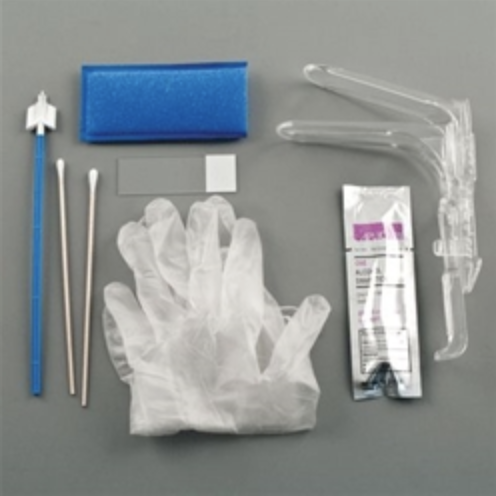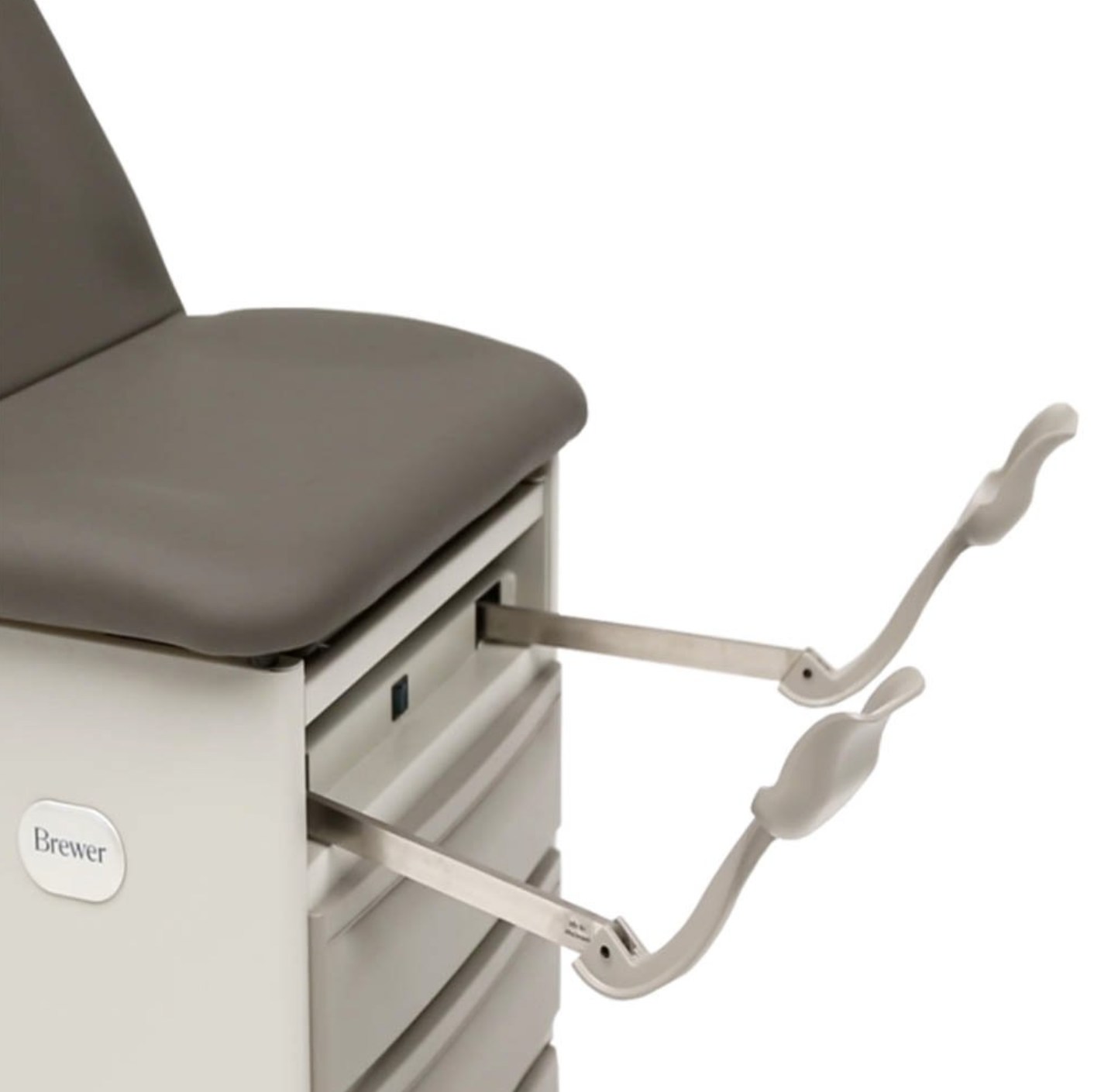What to Expect During a Routine Pap Smear
Aug 24, 2023
Written By: Colleen McElroy, RN, FNP-BC
If you’ve never needed to have a pelvic exam until now, this blog post can help you prepare before your initial conversation with your provider about your cervical cancer screening. At age 21 years old or older, you can expect to start having a conversation with your health care provider about routine cervical cancer screening, also known as a Pap smear. The Pap smear is completed in the clinic, either at an OBGYN or women’s health specialist’s office or your family care doctor’s office.
Why is it important and who needs to have these screenings?
Early cervical cancer detection through routine Pap smear exams saves lives, much like routine colonoscopies and mammograms! The cervix is a structure in the female reproductive system that lies between the vaginal canal and the uterus. The pap smear exam is started at age 21, regardless of sexual history, and is completed routinely every 3 years until you are age 30 (USPSTF, 2018). After age 30 and until age 65, the Pap smear is completed every 3-5 years (USPSTF, 2018). Early detection of cervical cancer can help avoid spread of the cancer in the person’s body or spread of the human papilloma virus (HPV). If you have had a total hysterectomy, are older than age 65 or younger than age 21, you do not qualify for cervical cancer screening (USPSTF, 2018).
What can I expect at an appointment for my Pap smear?
I recommend before beginning your appointment that you use the restroom, as the device used in the exam to visualize the cervix can cause discomfort if the bladder is full. In preparation for your Pap smear or pelvic exam, you do not need to shave or wax your pubic hair or leg hair unless you feel more comfortable doing so.

The appointment then will begin like any other, starting with the nurse or medical assistant asking you some questions about your health history or changes with medications, allergies, etc. and verifying your needs for the appointment. They will take your vital signs and ask you to undress, providing you with a cloth or paper gown and a paper drape to place over your knees.
The nurse or medical assistant may ask you to take off your bra. This is because the health care provider completing your pelvic exam generally does a breast exam at this visit as well, which is done over bare skin. The nurse or medical assistant will give you the supplies and then close the door and pull the curtain for your privacy. And then, the familiar waiting begins!
While you’re waiting, you may survey the countertop or tray with prepared supplies looking something like the set up in Figure 1 (The colors and types of instruments may differ based on the office).
The pelvic exam can be completed by a qualified healthcare provider such as a doctor of medicine (MD), doctor of osteopathic medicine (DO), physician assistant (PA), nurse midwife, or nurse practitioner (NP) in the clinic or hospital (if needed). The provider is ideally someone you have a prior patient-provider relationship with, especially if this is your first Pap smear. If you notice that you are fully undressed in your gown and that you do not feel prepared for the exam or no longer feel comfortable having your exam at this time, it is always OK to reschedule or to talk to your provider about how you are feeling. This is a very vulnerable exam for a patient and you have every right to feel comfortable and confident through this process! If you do decide at this time that you are not mentally prepared or are frightened, I recommend asking the provider to have a more thorough discussion with you about your Pap smear and reschedule within the same calendar year so you do not put yourself at risk for missing a cervical cancer diagnosis through this very important screening.

This process may be completed with a chaperone in the room which will be a nurse or medical assistant. The provider should talk you through the exam, explaining what they are doing with each step, and if they are not, you can ask them to.
The provider will wash their hands and likely begin with some questions about your health before beginning the physical exam. Here is where they may do a breast exam, listen to your heart and lungs, push on your abdomen, or feel your pulses in your wrists or feet.
After that portion of the exam is finished, you will be instructed to lay flat on the table and move your bottom to the edge of the table, almost so the fleshy part of your bottom is hanging off the table. At the same time or before you move down the table, the provider will instruct you to place your heels in the extensions from the table, as pictured in Figure 2. You can then let your legs fall to the sides, opening so that the provider is able to visually assess the labia, anus, and skin surrounding. At this time, you can tell the provider about any lumps, discomfort, or itching areas you noticed before coming into the office if this is the case. You will feel the provider touching those areas, and they may pull apart the labia to check for changes in the skin there as well.
The health care provider will then use a device called a speculum to complete the Pap smear, pictured furthest right in Figure 1. The speculum may be plastic or metal. This is the device that is used to examine the cervix. The speculum is prepared with lubrication and will likely feel cold to the touch. The provider will insert the speculum into the vagina and might instruct you to take a deep breath or tell you that you might feel some pressure. You will hear some clicks or feel the speculum opening while it is inside the vaginal canal so that the provider can better visualize the cervix. The provider will use the brush (Figure 1, furthest left) or a spatula (not pictured) to brush against the cervix to collect the cells that will give them information about the presence of possible cervical cancer cells. If you are sexually active, they may also do an STD test at this time.
When that part of the exam is completed, there will be clicks again to close the speculum and the speculum will be easily removed. The provider may also complete an exam to palpate your ovaries and uterus, which are not able to be seen using the speculum. This portion of the exam is done by inserting their fingers into the vagina and with the other hand, feeling the lower part of your abdomen, checking for abnormalities. Based on your age or if you expressed some concerning symptoms, this may also be a time where the provider will offer a rectal exam.
When the exam is finished, you can push yourself up and get dressed! Tissues, wipes, or pads may be provided for you after the exam. It is normal to feel some mild cramping or have some minimal bleeding after your Pap smear that may require a panty liner.
You made it through your first Pap smear! Your provider will notify you of the results. The timeline of results varies based on the laboratory, but if you have not heard back regarding your results, go ahead and give the office a call. Remember, communication with your provider and consent is key to making your Pap smear and pelvic exam a relatively painless process!
References
Figure 1. Retrieved from https://www.medicaldevicedepot.com/Sklar-Pap-Smear-Tray-Unit-of-Measurement-Case-of-p/96-1917.htm?dfw_tracker=3918-86942&gclid=Cj0KCQjwgMqSBhDCARIsAIIVN1XB7vq1HwdJco6-KoBkZv-gh4nizjMsiChs94XCLmB3tYT9DzSXbbwaAjECEALw_wcB
Figure 2. Retrieved from https://www.universalmedicalinc.com/access-exam-table-with-drawer-heater-pelvic-tilt.html
Cervical Cancer: Screening. USPSTF, 2018. Retrieved from https://www.uspreventiveservicestaskforce.org/uspstf/recommendation/cervical-cancer-screening.
